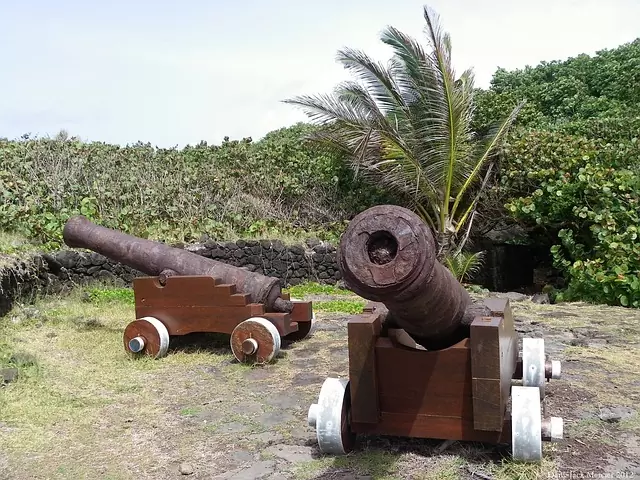Population
Guadeloupe has more than 400,000 inhabitants. Its population is rich in a mix of African, European, Indian and Caribbean ethnicities.
The first civilizations of Guadeloupe :
The Arawaks
The first inhabitants of the West Indies were the Arawaks or Tainos, an Indian people originally from South America. Sedentary, peaceful and highly evolved, the Arawaks lived mainly from agriculture, hunting and fishing. As consummate artists, they practised pottery, sculpture and weaving. Decimated a long time ago by the Caribbean Indians, some traces of their existence can still be seen today, particularly in Guadeloupe at Trois Rivières, at the site of the Rochers Gravées.
The Caribbean
The landing of the Caribbean Indians on “Karukera” – Ile aux Belles Eaux – put an end to the quiet life of the Arawaks because these violent, ferocious and cannibalistic invaders perpetrated the extermination of all Arawaks. They spared only the women in order to take them as their wives. It was a sad end for such a peaceful and refined people. The Caribbean continued their occupation of Guadeloupe despite several attempts at settlement by the Spanish. In the face of fierce resistance, all claims to the land were abandoned until 1635 when the French founded the first European colony.
In 1641, after several wars and massacres perpetrated by the French colonialists, a peace treaty was concluded between the Caribbean Indians of Guadeloupe and the French. By this treaty, the Indians agreed to leave the island for good in order to join Dominica. The ultimate fate of the Caribbean Indians became that of many indigenous peoples throughout the world following the encounter with diseases imported by Europeans – devastating diseases. Some representatives of this people still live today, notably on the island of Dominica, a neighbouring island to Guadeloupe.
Key Dates in Guadeloupean History
1635
Beginning of the colonisation of the island with the arrival of Charles Liénard and Jean Duplessis.
1650
The introduction of the first black slaves.
1674
Attachment of the island to the crown of France.
1685
The Black Code defines the status of the slaves.
1759-1763
Occupation of Guadeloupe by the English. Under their administration, the Port of Pointe à Pitre was developed.
1763
The British occupation ended with the Treaty of Paris. France abandoned its claims on Canada and obtained Guadeloupe in return.
1794
First decree for the abolition of slavery. The convention abolishes “the slavery of negroes in all the colonies”.
- Occupation of Guadeloupe by the English.
- Liberation of the island from English colonial rule by a battalion of soldiers led by the black nationalist Victor Hugues. Liberation also of the slave peoples.
1802
Napoleon Bonaparte sent General Antoine Richepance to re-establish slavery in Guadeloupe, thus annulling the 1794 law.
Revolt in Basse Terre by Delgrès and Ignatius. Ignatius lost his life on 25th May in a battle at Baimbridge. Delgrès died with 300 of his followers in Matouba.
1810-1816
Occupation of the island by the English for most of this period.
1816
The Treaty of Venice returned Guadeloupe to France.
1848
Final abolition of slavery after a campaign by the politician Victor Schoelcher.
1854 – 1885
The arrival of the “Hindus” in Guadeloupe. The need for labour in the cane fields leads to the recruitment of workers from India. About 45,000 Indians landed on the island during this period.
1936
Félix Eboué becomes the first black governor of Guadeloupe.
1946
Guadeloupe becomes a French department.
Eruption of the Soufrière 1976
The last eruption of the Soufrière occurred in 1976. The inhabitants of the region and the town of Basse Terre were quickly evacuated to Pointe à Pitre. No deaths were reported.
The deadly hurricanes
Several deadly cyclones appear in the annals of Guadeloupean history because of their devastating impact on the island. Two cyclones in particular are cited – the ‘great cyclone’ of 1928 which passed over Guadeloupe on 12 September 1928 with sustained winds of 230 km/h, and Hugo which passed in September 1989 with sustained winds of 220 km/h.

